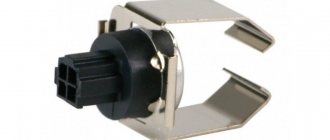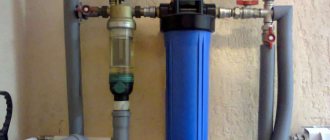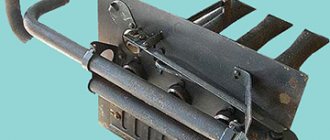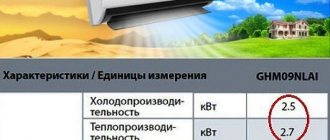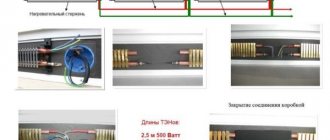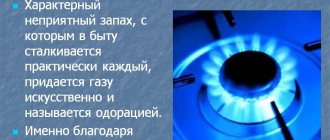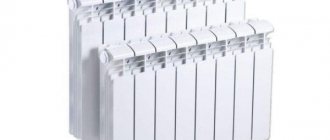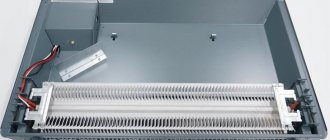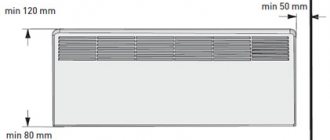A fan coil is a device whose task is to maintain a given temperature in the room. Acts as a receiving device in the chiller-fan coil system. Previously, this climate control equipment was used for cooling and heating large commercial and industrial facilities. This state of affairs is rapidly changing. Currently, the scope of application of fan coil units has expanded. Customers appreciated the environmentally friendly, reliable and efficient equipment that can replace 2 systems at once: heating and air conditioning. Manufacturers have adapted their equipment to meet the needs of medium and small facilities, including residential ones. How does a fan coil work? How does this system work and why is its potential highly rated? In this article we will talk about the principle of operation of the fan coil unit, the design of the equipment and the selection parameters.
Fan coil - what is it? Description, principle of operation
A fan coil is a cooling or heating device that uses water as a refrigerant in southern climates. In moderate and cold temperatures - a water-glycol mixture, colloquially “anti-freeze”. What does the word " fan coil " ? This word is derived from the English fancoil, which literally means “fan” + “heat exchanger” (coil).
Fan coil is not an autonomous climate control unit. The unit is a receiving device and is installed indoors. The external energy source in the system is a chiller. It is where the refrigerant is prepared. Hydraulic pumps are responsible for transportation. Fan coil units can be connected to the boiler room and used for heating.
Figure 1. Fan coil - appearance
Nuances of choosing a chiller
Tip 1: If you will be placing the cooler indoors, be sure to measure the width of the doorway first. It often happens that the purchased unit simply does not fit into the doors, which becomes a serious problem for its installation.
Tip 2. In the installation room, it is necessary to ensure sufficient air exchange, which corresponds to the parameters and characteristics of the unit producing free cooling.
Tip 3. If the chiller is installed outside the room, on the street, be sure to consider the following issues:
- protection of the unit from external influences and vandalism;
- possibility of using non-freezing liquids.
Tip 4. Before purchasing, even at the selection stage, you need to accurately determine the flow rate of the cooled water (liquid) in order to calculate the pressure necessary for cooling it.
Tip 5. When choosing an installation filled with antifreeze liquid, you need to calculate the performance of the water-cooled evaporator.
How does a fan coil differ from an air conditioner?
Externally, fan coil units are no different from traditional air conditioners. Manufacturers use similar design solutions when manufacturing the indoor unit. Fan coil units are used in large commercial properties or private homes equipped with an air/water heat pump. They are easy to use, economical and safe for allergy sufferers. Control is carried out using a remote control. They work quickly and efficiently. They will warm the room on a winter evening and cool it down on a hot summer.
But fan coil units are a promising alternative to traditional heating methods. Why? The main advantage is the nature of the heat and coolant. It is he who determines the fan coil operating system. Below is a brief comparative analysis of systems running on water and freon.
Comparison table between fan coil and air conditioner
| Fan coil | Air conditioner |
| The water is 100% environmentally friendly, safe and does not harm the environment. | Freon, which is used in traditional air conditioning, is explosive, toxic, and destroys the ozone layer. |
| Regular polypropylene water pipes are sufficient. | Installation of highways requires expensive copper pipes. |
| Wide range of operating ambient temperatures: from -40 to +50°C. | Do not turn on at temperatures outside the window below -7°C...-15°C. |
| Unlimited scaling options. | Limited length of freon lines: for household models - no more than 20 m, for industrial models - no more than 50 m. |
Pros and cons of SCV with closers
The obvious advantage of fan coil air conditioning is the precise maintenance of the desired temperature in different rooms. Multi-zone systems allow very wide adjustment of microclimate parameters within one building. Other advantages compared to conventional air conditioners:
- the cost of equipment for 2-3 rooms will be clearly less than the price of a multi-split system of identical power;
- sources of heat and cold are located in the technical room or on the street, external units do not clutter the façade;
- fan coil units can be installed 50...200 meters from the chiller;
- communications between units are made of inexpensive plastic pipes - low-density polyethylene or polypropylene (the latter needs to be soldered);
- in the event of an accident or leak, it is easier to make repairs and replenish the system with purified water.
Comment. The distance from the chiller to the fan coil is limited only by considerations of expediency, since high heat (cold) losses occur on too long lines, plus the energy consumption of a powerful pump increases.
Do not think that chiller-fan coil type SCR is applicable only in industrial buildings. The brands Daikin, Carrier and Gree produce small two-fan chillers with a capacity of 3...10 kW, which are quite suitable for private homes.
Disadvantages of fan coil units:
- A 2-room SCV is still more expensive than two separate split systems;
- decent size and weight of the chiller unit;
- Qualified installation and commissioning of equipment is required;
- The equipment will have to be serviced and technicians will have to be called in every year.
On an industrial scale, the main competitors of water SCRs remain freon VRF systems operating on the “split” principle. Up to 50 indoor units are connected to the external vapor compression module alone. The cost of the equipment is approximately the same, but fan coil units benefit from the ease of laying lines and the lower price of plastic pipes compared to copper ones. A separate story is a freon leak from a huge system, which is not easy to find and eliminate.
Types of fan coil units: difference, advantages and disadvantages
Classification methods are based on location, number of heat exchangers and device power. Let's list the main types of fan coils and talk about the features of each.
According to the installation method and the presence of the housing
Fan coil units are classified according to the method of installation: wall-mounted, floor-ceiling, duct, cassette. The choice of model depends on the characteristics of the room, the tasks performed, requirements for power, acoustics, and integration into design. For tall and voluminous rooms, cassette models are often chosen - open-frame units that are mounted behind decorative panels or suspended ceilings. Detailed information about prices and types of work on the fan coil installation page.
- We talked in more detail about the piping components of a fan coil unit with a two-pipe and a three-pipe valve.
By number of heat exchangers
Double-pipe fan coils have one heat exchanger for heating or cooling the air. In four-pipe designs there are two, which allows you to perform two tasks simultaneously. These models are often installed under windows, as in winter they act as radiators. Fan coil units with two heat exchangers have 2 independent hydraulic modules. The device can heat some rooms and cool others. Switching between 2 modes occurs instantly. A fan coil unit with one heat exchanger is used for heating or cooling on a seasonal basis. Switching between modes takes some time.
Figure 2. Fan coil installation
Features of installation of such equipment
Installing a fan coil unit is not an easy task. If the home owner does not have much experience in installing heating and/or refrigeration equipment, it is better to turn to professionals. First, the fan coil itself is installed. The installation location depends on the type of device: ceiling, floor, wall.
In any case, it is necessary to ensure the free movement of air masses from the fan coil throughout the room for the device to operate effectively.
After installing the fan coil unit, it is necessary to assemble the piping unit, install pipes and lay a layer of thermal insulation. A number of elements such as shut-off valves, temperature sensors, pressure gauges, etc. should be supplied.
Rubber-coated pipes may be an excellent option for installing this type of system. They are compact and have good thermal insulation properties.
If necessary, air ducts are installed. These structures should be equipped with sound insulation. To ensure that water is distributed evenly throughout the system and its correct hydraulics are ensured, balancing valves are used.
The presence of these devices greatly simplifies setting up the system, since regardless of its configuration, the same water pipes can be used everywhere.
Such a mixing unit must be installed when connecting a fan coil system to a chiller or boiler. It is better for inexperienced installers to consult with specialists
When drawing up a system design, it is necessary to take into account the length of the air ducts, which is strictly standardized. This is especially true when installing wall-mounted fan coil units under windows. Steel air ducts are equipped with a vibration muffler. A condensate collection and drainage system must be installed.
Trays for collecting moisture should be secured under the corresponding openings. After this, the fan and electric heaters (if any) are connected to the power supply. Then all contacts, channels and pipes are checked for leaks.
After this, the system is launched and pressure tested to check the quality of installation. If there are no flaws, you can continue finishing work.
Pipes that are connected to fan coil units must be carefully sealed and covered with a layer of thermal insulation materials. Before starting installation, you should draw up a project and perform calculations of the system
The easiest way to cope with the installation of a floor-mounted fan coil unit. It does not require installing a condensate drainage channel. The device has two pipes that are connected to the corresponding device.
When installing wall, ceiling and cassette models, the connection to the electrical network is made according to a more complex scheme than for a floor-standing fan coil unit.
In any case, installing a four-pipe system will be the most difficult. To install any type of system, it is important to correctly perform the design and a number of special calculations.
Classification of fan coil units by type
There are 2 main features for classifying equipment: zonal distribution of air masses and installation method. In the first case, single-flow and four-flow fan coils are distinguished, in the second - wall-mounted, ducted, floor-ceiling, including open-frame, cabinet. Let's talk about each of them in more detail.
Cassette single-flow
Figure 3. Cassette single-flow fan coil - appearance
Optimal for narrow and long corridor-type rooms with high ceilings (over three meters). Air moves in one direction. The flow can be adjusted using dampers. The equipment is mounted in the ceiling space. The decorative grille remains in view.
Cassette four-stream
The most ergonomic and popular model. The air moves in 4 directions and is evenly dispersed throughout the room. Provides uniform heating or cooling without discomfort or drafts. Four-flow fan coil units are in demand in hotel lobbies, restaurants, and sports complexes.
Figure 4. Cassette four-flow fan coil - appearance
Wall mounted
Externally indistinguishable from traditional split systems. They are installed in small offices, private homes and other premises with ceiling heights of up to 2.7 m. They are quieter than cassette fan coils. The housing is protected by a plastic casing. Vibration damping and sound insulation are provided.
Figure 5. Wall-mounted fan coil unit - appearance
Duct
They do not have a decorative body and are mounted in the ceiling space. Virtually invisible (except for bars in the wall). They are often installed in hotels and inns. Air ducts and filtration and humidification sections are connected to duct fan coil units. Can be integrated into ventilation and mixed with outside air.
Figure 6. Duct fan coil - appearance
Floor-ceiling
A good alternative for rooms with low ceilings and high requirements for air flow distribution. The air in both the floor and ceiling models moves along the wall/ceiling plane and is gently distributed throughout the room. By comparison, in wall-mounted models, unidirectional flow is more pronounced, which often causes discomfort for users in close proximity.
Figure 7. Floor-ceiling fan coil unit - appearance
Floor-ceiling frameless
Equipment option for industrial implementation. They are often installed in high and voluminous rooms without great design requirements: in production, warehouses, hypermarkets, where communications are installed in an open way. The unit does not have a housing; the fan coil unit is quite compact and can be installed between a wall and a false wall.
Figure 8. Frameless fan coil
Cabinets
Powerful stationary machines that look like cabinets. Installed in large rooms. Air intake is carried out through the rear part of the unit or the lower front part, which can be used as a fresh air mixing chamber.
Figure 9. Cabinet fan coil - appearance
The design of a fan coil unit - what elements does it consist of?
A fan coil is a complex technological device, the design of which includes heat transfer elements, a fan, filtering components, and a drainage system. Let's talk about each of them in more detail.
What does a fan coil consist of?
The main structural elements of a fan coil unit are a heat exchanger (one or two), a fan (radial or transverse), an electric motor, a casing with sound and heat insulation, and a filter. Since moisture condensation occurs during the operation of these devices, fan coil units are equipped with a condensate collection tray located under the heat exchanger. For the device to operate, it is necessary to adjust the hydraulic equipment (shut-off valves, heat exchanger control valves, fittings) and control elements (thermostats, regulators).
Heat exchanger and its functions
The heat exchanger in the fan coil is the “heart” of the system. It is he who is responsible for the transfer of energy (cold or heat) from one environment to another. The aqueous solution moves through the coil pipes. The fan coil fan forces the room air through this heat exchanger, thereby cooling or heating it. The liquid returns to the chiller, where it undergoes a new refrigerant preparation cycle.
Air filter and its functions
The filter in the equipment performs two tasks: it protects the equipment and purifies the air. Prevents dust and dirt from accumulating on coils. Filters the air, removes dust, allergens, viruses, pollen. The depth of cleaning depends on the filtration class.
Automatic control subsystems and their functions
Responsible for the accurate and uninterrupted operation of equipment. Automatic control subsystems include remote controls, thermostats, control units, software and address cards. The equipment regulates the air temperature in the room by changing the rotation speed of the fan coil fans or by turning on/off a three-way valve.
Electric motor and its functions
The fan motor regulates the speed of operation of the appliances and the efficiency of cooling and heating. Control its operation using remote control. The fan coil fan is controlled by its own controller, which, based on a signal from a temperature sensor, can regulate the performance stepwise.
Drainage pump and its functions
The drainage pump pumps out the accumulated condensate in the drainage system, which is discharged through the pipeline into the sewer. The equipment has compact dimensions and anti-vibration mounting. Can be mounted on a wall, pole or hanging position. A prerequisite for installing a drainage pipeline is compliance with a counterslope to prevent fluid stagnation.
Pallet and its functions
The sump is an important part of the fan coil drainage system. When the air cools, condensation forms on the outer surface of the heat exchanger tubes, which accumulates in the pan. The liquid is drained through the pipeline system into the sewer system. The drainage pump is responsible for pumping out the condensate.
Design parameters
The structure of the air unit is a rather complex mechanism consisting of various technical parts:
- Compressor.
- Specialized capacitor model.
- Evaporator.
- Regulator of atmospheric flows.
- System control unit.
- Pipeline accessories.
- Hydromodule.
The listed elements are placed on one frame, forming a closed system of operation, in which the refrigerant circulation is provided by the compressor. A stable freon cycle in a closed mechanism helps lower the temperature of the liquid and remove the existing heat to the outside by drawing air through the condenser. To regulate the volumes used, a special tube or valve is used.
How to choose a fan coil?
Choosing a fan coil unit is a responsible task. When selecting equipment, you need to rely on design calculations, the purpose of the room and the budget. Additional factors should be taken into account (climate, number of sunny days, heat flow from people and equipment) - they can significantly change the power of devices.
Main manufacturers
The climate control equipment market is growing rapidly: new players appear every year. Among the industry leaders:
- Daikin (Japan);
- Yor (USA);
- Venterra (Italy);
- General Climate (Russia);
- Ballu (Italy);
- Electrolux (Sweden);
- Haier (China);
- Carrier (USA);
- McQuay (USA).
Selection by power
When calculating the power of a fan coil, several factors are taken into account:
- volume and purpose of the room;
- heat inflows (sunlight, number of people, wall thickness and quality of thermal insulation, lighting power, number of household and office equipment);
- humidity level;
- coolant temperature in the system;
- volume of supply ventilation.
The average value is calculated by selecting a 1000 W fan coil unit for every 10 m2 of a room with a ceiling height of 2.7-3 m.
Fan coil unit passport
Fan coil unit passport - installation and operation manual. Each piece of equipment is equipped with it. Without a passport, installation work and commissioning of the fan coil unit are not allowed.
The document contains the following sections:
- security measures;
- manual;
- installation and maintenance;
- dimensions;
- fan coil technical characteristics;
- additional information.
Figure 10. Fan coil unit passport - example
The passport also indicates the output information about the manufacturer, the address of the plant, and the service life. The description (passport) of the fan coil indicates the conditions of transportation and storage, and the procedure for waste disposal.
Conclusion
As a hotel unit, as well as the chiller/fan coil system, it is an environmentally friendly alternative to traditional air conditioning. Universal water-powered equipment can replace the heating and cooling system and reduce building operating costs. The purpose of fan coil units is rapidly expanding: climate control equipment can be used not only at large industrial facilities. Manufacturers produce units of medium and low power, available for installation in small commercial or residential buildings, apartments.
Installation
The fan coil is an internal module. It takes up minimal space, works quietly and often does not even have its own body, since it is usually “hidden” behind false walls or suspended ceilings. Being an inexpensive element of the climate control system, such a device can be used in more than one room.
In fact, this is the advantage of “assembling” a chiller-fan coil unit: you can install a closer in each room and not go broke. Moreover, the device will not affect the interior in any way; it will not even be visible. And cooled or heated air will be supplied through ventilation grilles, which can be decorative.
